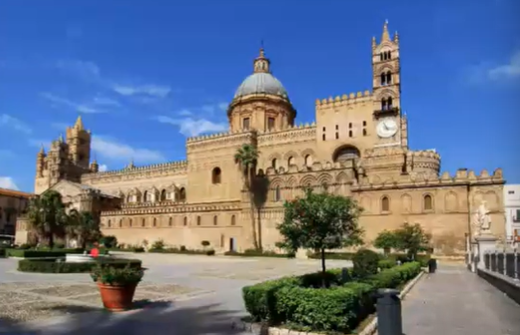1 Italy
Home of Classic Art
Northern and Central Italy: abundant marble (highly prized wall decorations)
Red, black, and white marble existed in profusion
contributed to the incorporation of stripes and panels into the façade and side walls
Windows
low & narrow, walls are thick to keep out the glare and heat of the sun
Foreign importation
ltalians displayed natural taste and artistic instincts, but the architects seemed to be working around a style that they were not fully comfortable with
Not entirely in harmony with the requirements of the climate and the
nature of their building materials
Geographic grouping rather than chronological
Decorative treatment in the form of mosaics and frescoes shows the influence
of the Romans
Lack of inclination that the Italians showed to construct large windows and fill them with stained glass
ARCHITECTURAL CHARACTER
Italian architects preferred to keep the construction tradition established in the previous centuries. Due to this reason, gothic in ltaly is often referred to as Romanesque Gothic or Italian Gothic.
It was essentially an updated interpretation of the Romanesque with few Gothic details
Characteristics:
No external buttresses
No narrow naves
No high towers
No large windows
No gargoyles
“Pure“ Gothic - High pointed arches and spires, buttresses, gargoyles, large colored windows
Romanesque Gothic - Thick supporting walls with a few small windows of clear glass, and thick towers.
Examples of Late Medieval Architecture in Italy
North Italy
MILAN CATHEDRAL (14th-19th cent)
2nd largest Gothic cathedral in the world, next to Seville Cathedral,
Spain
largest medieval cathedral in Italy
more than 50 architects
took part in the construction of the church in a span of 5 centuries
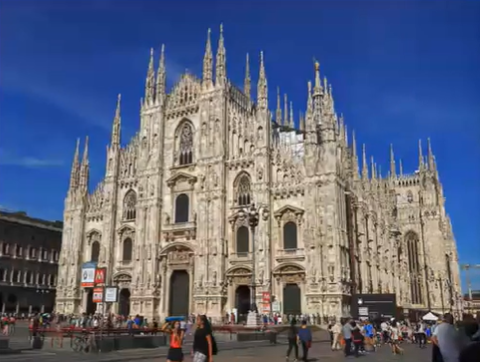
DOGE’S PALACE (1309-1424)
Venice
Islamic and Gothic mix
Combination of columns, pointed arches, capitals and open tracery is unique to Venetian Gothic.

CA D’ORO, Venice (1424-36)
by Giovanni and Bartolomeo Buon
similar Venician tracery with Palace of Doge
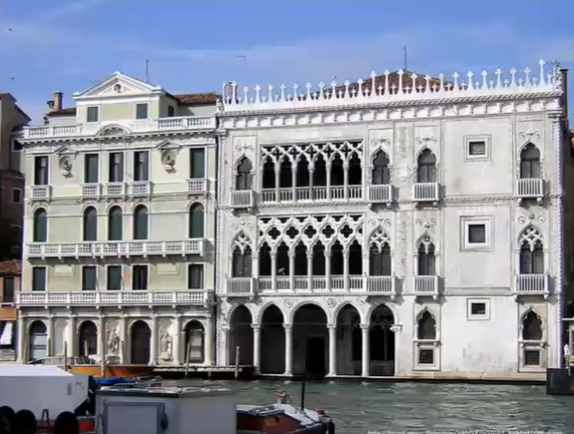
Central Italy
FLORENCE CATHEDRAL (1296-1462)
Gothic Cathedral was designed by Arnolfo di Cambio;
Competitors of the dome design were Filippo Brunelleschi and Lorenzo Ghiberti.
Arnolfo di Cambio left the dome open; the dome is actually Renaissance, and not Gothic.
Gothic parts of the church: Florence Cathedral, Bell Tower, Baptistery, some parts of the facade.
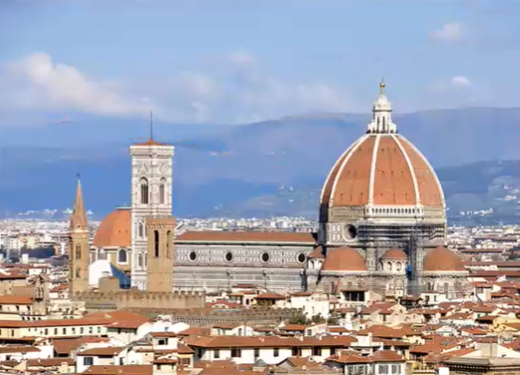
The FLORENCE CATHEDRAL Bell Tower was initially designed by Giotto and later by Andrea Pisano and Francesco Talenti
Its exterior is faced with polychrome marble in various shades of green and pink bordered by white
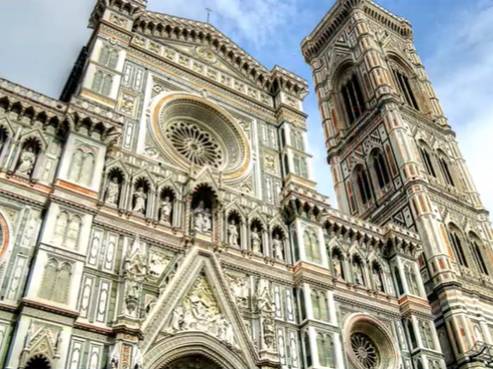
FLORENCE CATHEDRAL Baptistery (1452-1462)
by Lorenzo Ghiberti Florentine
Romanesque style
octagonal in plan with an internal dome
It is faced with Siena red, Prato green and white Carrara marbles
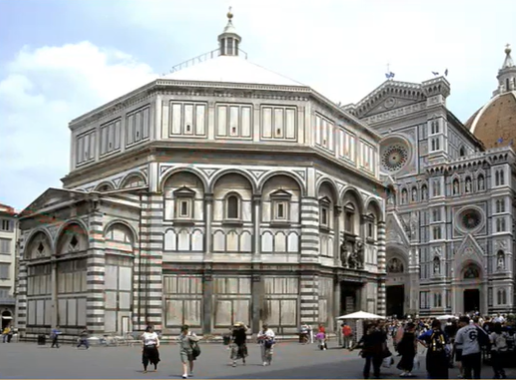
SIENA CATHEDRAL (1215)
is faced with Siena red and Prato green marbles.
polychrome details
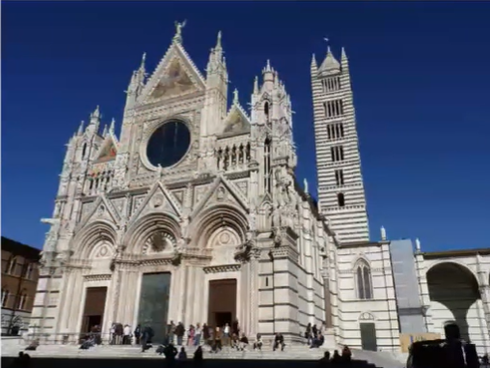
the interior with zebra-marble stripes on piers and walls.
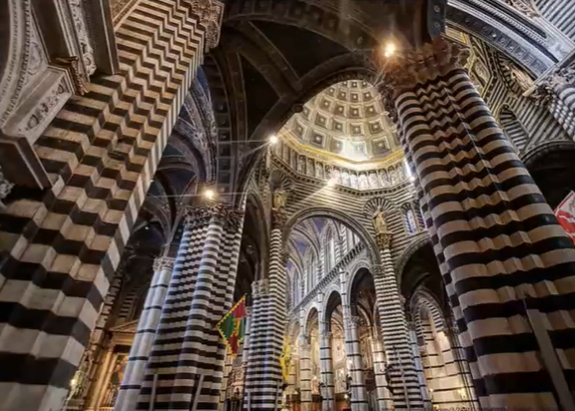
ORVIETO CATHEDRAL (1290)
by Arnolfo di Cambio, is faced with striped marble,
basalt and travertine and windows are filled with
alabaster
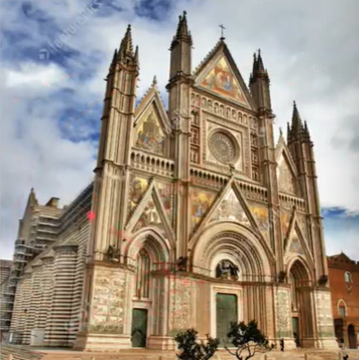
the facade has glittering mosaics created by the artist Cesare Nebbia
S. CROCE, Florence (1294)
a Gothic version of a basilican church by Arnolfo di Cambio
It is the largest Franciscan church in the world
Basilica of the Holy Cross
Has sixteen chapels, many of them decorated with frescoes by Giotto and his pupils
Said to have been founded by St. Francis himself
Also known as the Temple of the Italian Glories (Tempio dell'itale
Glore). S. Croce
Florence contains monuments of illustrious ltalians like Michelangelo's and Galileo's Tombs
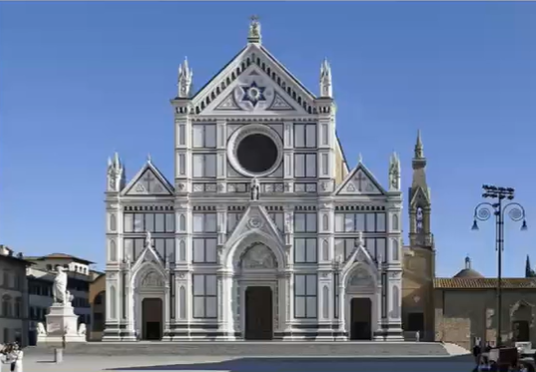
Southern Italy & Sicily
MESSINA CATHEDRAL (1117)
a fine example of Sicilian Norman architecture, has retained its original medieval lines even after a long history
The open timber ceiling has a beautiful colorful Arab motifs.
Messina Cathedral's bell tower is unique with its beautiful
automated astronomical clock tower.
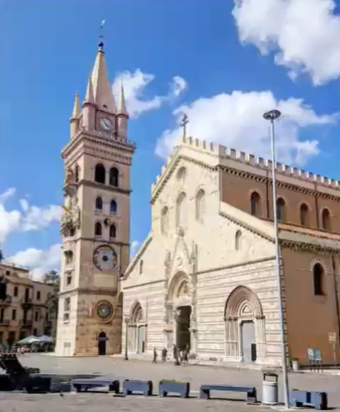
PALERMO CATHEDRAL (1185)
Dedicated to the Assumption of the Blessed Virgin Mary
by Waiter Ophamil
was turned into a mosque by the Saracens after their conquest of
the city in the 9th cent
Contains different styles
PALERMO CATHEDRAL is characterized by the presence of
different styles, due to a long history of additions, alterations and restorations, the last of which occurred in the 18th cent
The carved portal of this entrance was executed in the period 1426 to 1430 by Antonio Gambara, while the magnificent wooden leaves are by Francesco Miranda (1432)
